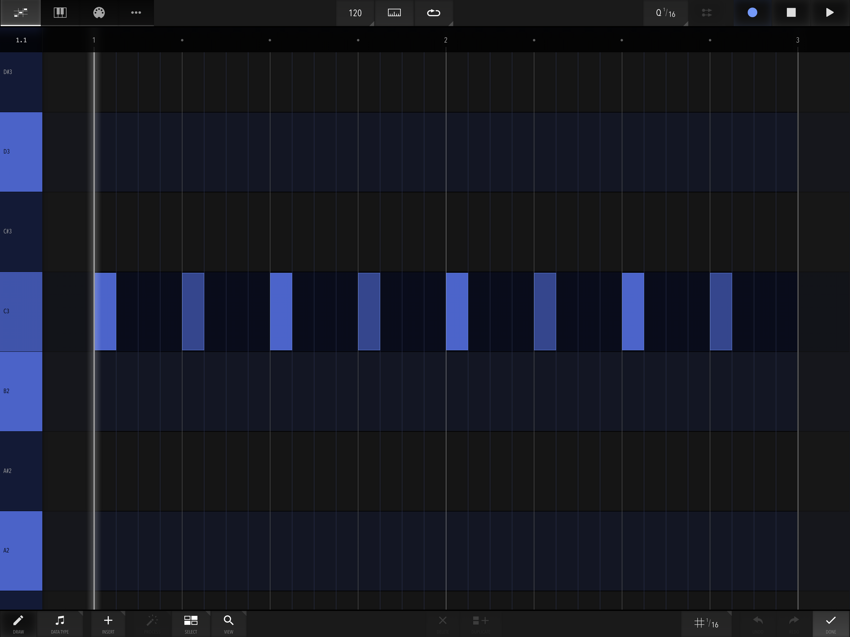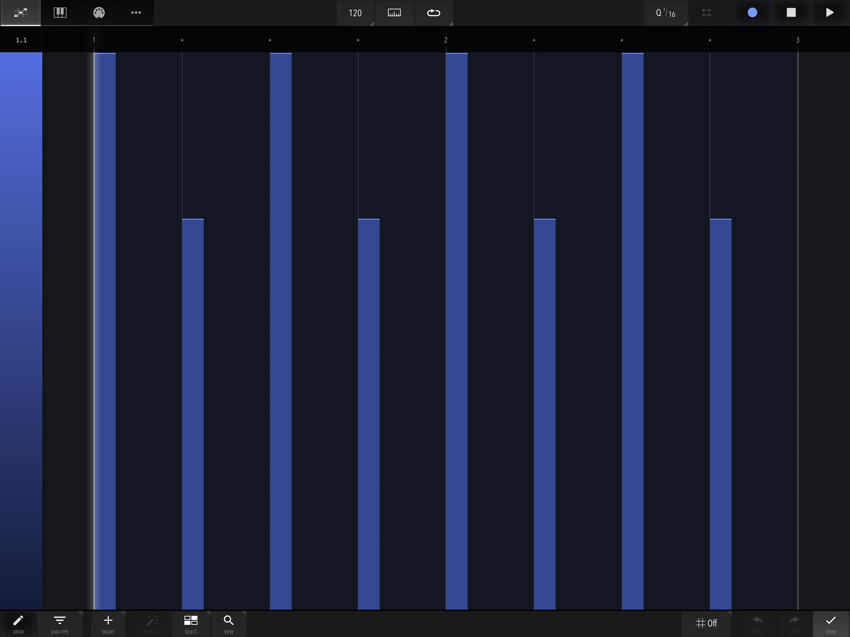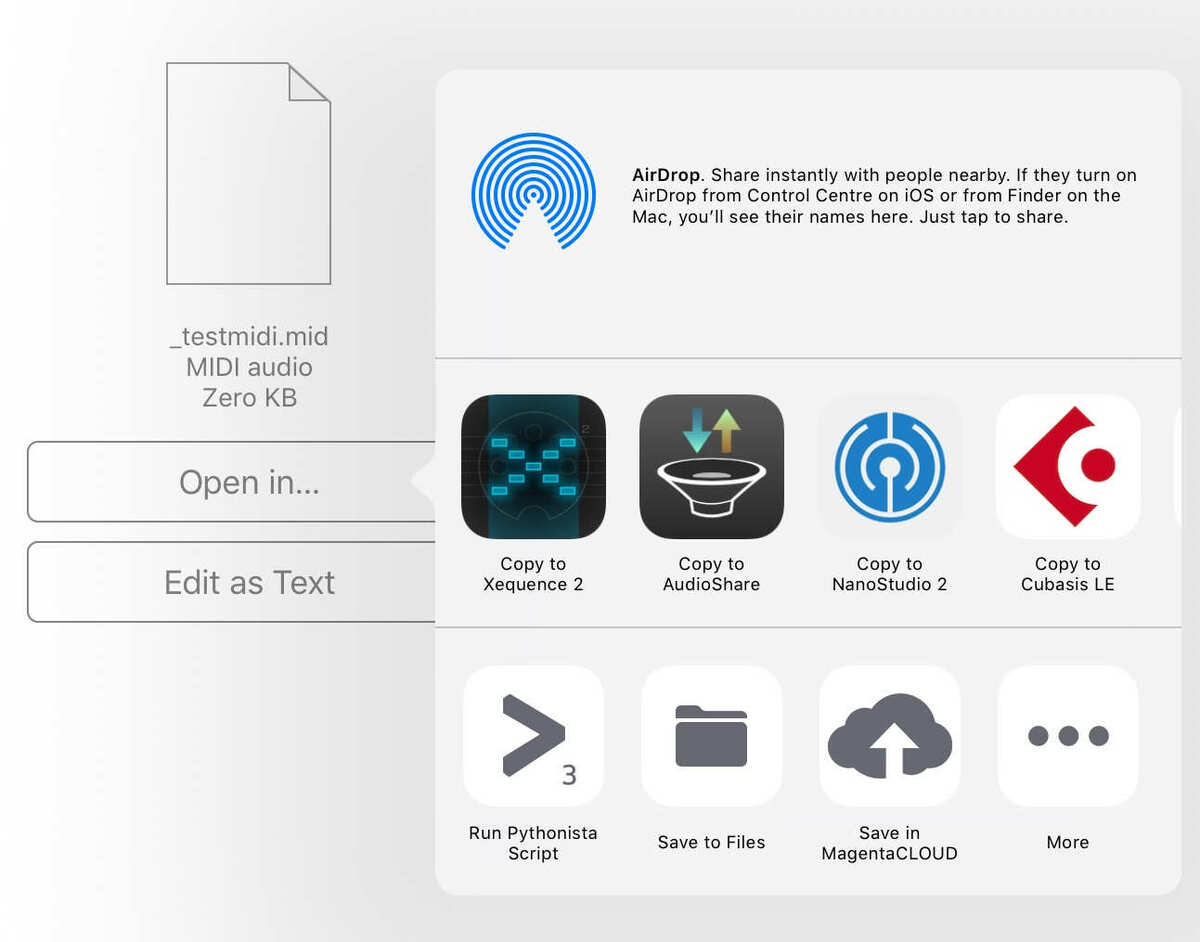Loopy Pro: Create music, your way.
What is Loopy Pro? — Loopy Pro is a powerful, flexible, and intuitive live looper, sampler, clip launcher and DAW for iPhone and iPad. At its core, it allows you to record and layer sounds in real-time to create complex musical arrangements. But it doesn’t stop there—Loopy Pro offers advanced tools to customize your workflow, build dynamic performance setups, and create a seamless connection between instruments, effects, and external gear.
Use it for live looping, sequencing, arranging, mixing, and much more. Whether you're a live performer, a producer, or just experimenting with sound, Loopy Pro helps you take control of your creative process.
Download on the App StoreLoopy Pro is your all-in-one musical toolkit. Try it for free today.
Any apps that can read Ableton .als files?
Hi all, I’ve got Groovebox playing nice inside AUM using virtual MIDI in. It doesn’t, as far as I can see, currently have MIDI out, (shame) but I found it can export combined wav and midi Ableton Live .als files. So I’m wondering if anyone knows of any IOS apps that can read these combined files (and thus perhaps let me extract the MIDI, even if it is just by playing the file and re-recording it in Atom?) I‘m hoping for an entirely iPad focussed option. I don’t have Ableton and I don’t do PC musicking on principal these days.



Comments
None that I'm aware of, and I agree, it would be useful to be able to get the MIDI out from the patterns in some usable form via iOS only...I personally want to use them on my Circuit and MonoStation.
What is in these files? Are they binary or some renamed archive stuff?
I would say you should contact the developer and ask if they would consider midi export or midi out in an update. You could offer to help test if it helps. It depends on the code and if they use a wrapper but some apps will already have the midi out part in some form (maybe not complete) and to enable this is possible without a ton of extra coding.
As a temporary workaround, you can get Ableton Live Lite free with apps like Patterning, Koala Sampler, or Gadget 2.
But yeah, it would have been nice if we could export the MIDI as well.
The als file is a xml file, this is a file exported from Groovebox:
Thanks for the tip. I just renamed the .als to a .txt and it's showing up in Audioshare. I wonder if we could use this MIDI data in mosaic.
I don’t know/have Groovebox, but this is like an 8 beat pattern of C-2 with the 1st note played at 114 velocity and the other 7 notes full 127 velocity - each note for 1/4 seconds. Sounds like a „4 to the floor“ to me?
Yes, that's right
Just read about the MIDI file specifications - its binary. So i might guess there is no way to create these on the fly without writing a dedicated app on iOS only. Sadly file-creations are limited - as far as i know.
Edit:
I might extend that i thought about a text-based process before i knew about the MIDI specification, which are quite complex and NOT doable in pure text.
@AmpifyxNovation
Midi Export top of my feature request list too. 🤞
I'd rather use Ableton Lite but for a 100% iOS-based solution, I'd recommend getting familiar with OMZ Pythonista, basically a Python IDE for iOS with support for pythonic 3rd-party libraries like writing MIDI files and reading XML. I don't think it would be too difficult to write an .als to .mid converter if that's really important enough to you.
Pythonista can also receive files and "open in..." for sharing them to your sequencer of choice.
Thanks for the tip, Pythonista does look useful... and yes, it's important enough for me to consider it....however I spend my 9 - 5:30 writing code of varying types....so when I'm thinking about music, I'd rather someone else was thinking about the code
From reading the Mozaic monster thread, I'm sure we have quite a few good coders here. Maybe one of them finds the idea exciting enough to take care of it.
I wonder though how many apps export the MIDI in Ableton export, the ones I've seen by now only export audio stems and I hope Groovebox isn't the only one.
I just opened the .als file export from Groovebox into Sublime Text but didn't see any mention of Midi in the layout like it does on your xml file.
Did you take any other steps first?
I selected midi only when I exported from Groovebox, maybe that's the difference?
Possible you can do a screenshot of that option? I don't seem to have it. Cheers.
Yes, I select Midi and then Export:
So - this is the code to write a simple scale to a MIDI file inside of Pythonista:
So there just needs to be a parser for the ABL XML
I verified the written MIDI file inside of Xequence2 - it worked flawlessly.
Never mind, tried to post the complete xml, but it's not possible.
Thanks @White. I'm using a different version of the app so I don't have this option available to me at the moment. Interesting though. Cheers.
You need to enter „ ```“ before and after the code - without the „“ of course.
- without the „“ of course.
Ok, I'll try again, 8 kick drums with different velocity, 120 bpm:
<?xml version="1.0"?> <Ableton MajorVersion="4" MinorVersion="9.0_305" SchemaChangeCount="10" Creator="Groovebox"> <LiveSet> <Tracks> <MidiTrack Id="0"> <Name> <EffectiveName Value="Drumbox MIDI" /> <UserName Value="Drumbox MIDI" /> </Name> <ColorIndex Value="164" /> <DeviceChain> <MainSequencer> <ClipSlotList> <ClipSlot> <HasStop Value="true" /> <ClipSlot> <Value> <MidiClip Time="0"> <Notes> <KeyTracks> <KeyTrack> <Notes> <MidiNoteEvent Time="0" Duration="0.25" Velocity="127" OffVelocity="127" IsEnabled="true" /> <MidiNoteEvent Time="1" Duration="0.25" Velocity="89" OffVelocity="89" IsEnabled="true" /> <MidiNoteEvent Time="2" Duration="0.25" Velocity="127" OffVelocity="127" IsEnabled="true" /> <MidiNoteEvent Time="3" Duration="0.25" Velocity="89" OffVelocity="89" IsEnabled="true" /> <MidiNoteEvent Time="4" Duration="0.25" Velocity="127" OffVelocity="127" IsEnabled="true" /> <MidiNoteEvent Time="5" Duration="0.25" Velocity="89" OffVelocity="89" IsEnabled="true" /> <MidiNoteEvent Time="6" Duration="0.25" Velocity="127" OffVelocity="127" IsEnabled="true" /> <MidiNoteEvent Time="7" Duration="0.25" Velocity="89" OffVelocity="89" IsEnabled="true" /> </Notes> <MidiKey Value="36" /> </KeyTrack> </KeyTracks> </Notes> <Loop> <LoopStart Value="0" /> <LoopEnd Value="8" /> <StartRelative Value="0" /> <LoopOn Value="true" /> <OutMarker Value="8" /> <HiddenLoopStart Value="0" /> <HiddenLoopEnd Value="8" /> </Loop> <Name Value="Drumbox 1 MIDI" /> <ColorIndex Value="24" /> <TimeSignature> <TimeSignatures> <RemoteableTimeSignature> <Numerator Value="4" /> <Denominator Value="4" /> <Time Value="0" /> </RemoteableTimeSignature> </TimeSignatures> </TimeSignature> </MidiClip> </Value> </ClipSlot> </ClipSlot> </ClipSlotList> </MainSequencer> <FreezeSequencer> <ClipSlotList> <ClipSlot> <ClipSlot> <Value /> </ClipSlot> <HasStop Value="true" /> </ClipSlot> </ClipSlotList> </FreezeSequencer> <DeviceChain> <Devices /> </DeviceChain> </DeviceChain> </MidiTrack> </Tracks> <MasterTrack> <DeviceChain> <Mixer> <Tempo> <ArrangerAutomation> <Events> <FloatEvent Time="-63072000" Value="120.00024000047999" /> </Events> </ArrangerAutomation> </Tempo> <TimeSignature> <ArrangerAutomation> <Events> <EnumEvent Time="-63072000" Value="201" /> </Events> </ArrangerAutomation> </TimeSignature> </Mixer> </DeviceChain> </MasterTrack> <SceneNames> <Scene Value="Section 1" /> </SceneNames> </LiveSet> </Ableton>This might be helpful for people. It does require opening the file inside Ableton first. Any version of 9 or 10 is fine.
The exported midi file should retain the useful name supplied by Groovebox.
@MrBlaschke
Very cool!!
I think i got a basic converter.
This is the MIDI file my script generates from the XML @White posted above
Correct (rounded) bpm

Note 36 - C3

And the velocity values:

Need to clean up my script a bit
For the ones that are interested:
- The script is iOS only (Runs inside Pythonsita)
- reads the abl file from the same directory
- writes the MIDI file to the same directory
- does not parse any rule (like isEnabled and stuff is ignored)
As i do not have GrooveBox it is hard to test all structures - i only have the one @White provided.
But as a basis this should do it. It works with the provided data.
Thanks to @rs2000 for the Pythonista Tip - i use it daily but wasn’t aware of the implemented MIDI libraries. I use it for non musical stuff

Excuse my ignorance
EDIT:
Removed the sourcecode - updated version is on next thread-page
Wow this is very impressive 😊👍
If you want a xml file with more than a kick drum or with some chords, I can post one.
Can you guys translate for the rest of us please? Is this an app? Or mosaic code?😳🤪
You need the app Pythonista:
Pythonista 3 by omz:software
https://apps.apple.com/de/app/pythonista-3/id1085978097?l=en
A short overview of the process:

Open the .als file in Pythonista:
Now run the magic python script in Pythonista and share the resulting file to your sequencer of choice:

Ok - i tested some more with @White and as i thought i have to include loops to read all batches of notes for several included tracks. I have a file from @White that includes more than one track and could work on it.
I just want to make sure that it is really needed to do!? I have no use for it so i don’t want to waste time.
so i don’t want to waste time.
Was it just a prove of concept for „nice to know“ or is it of real use? @Svetlovska and @AndyPlankton ?